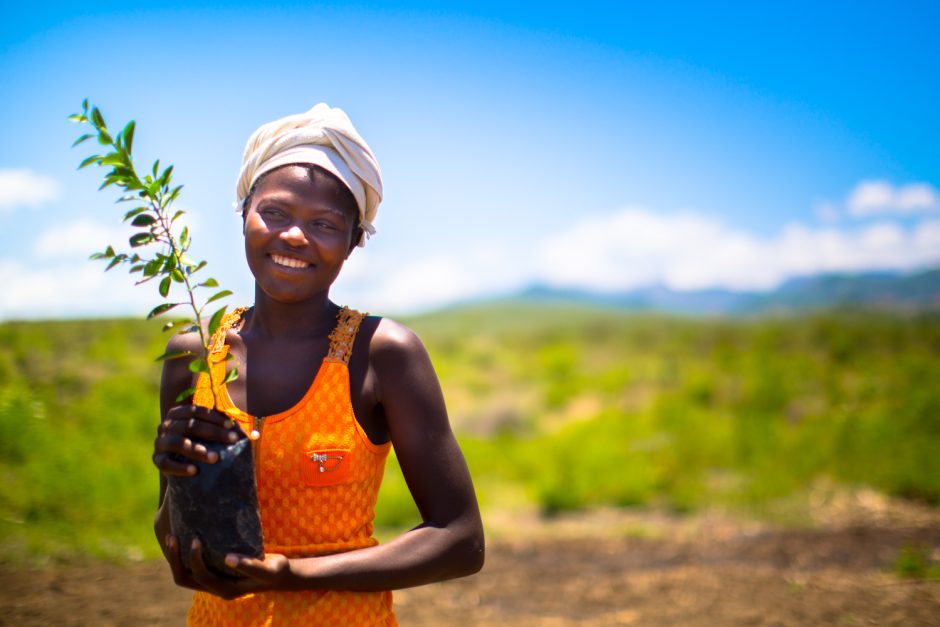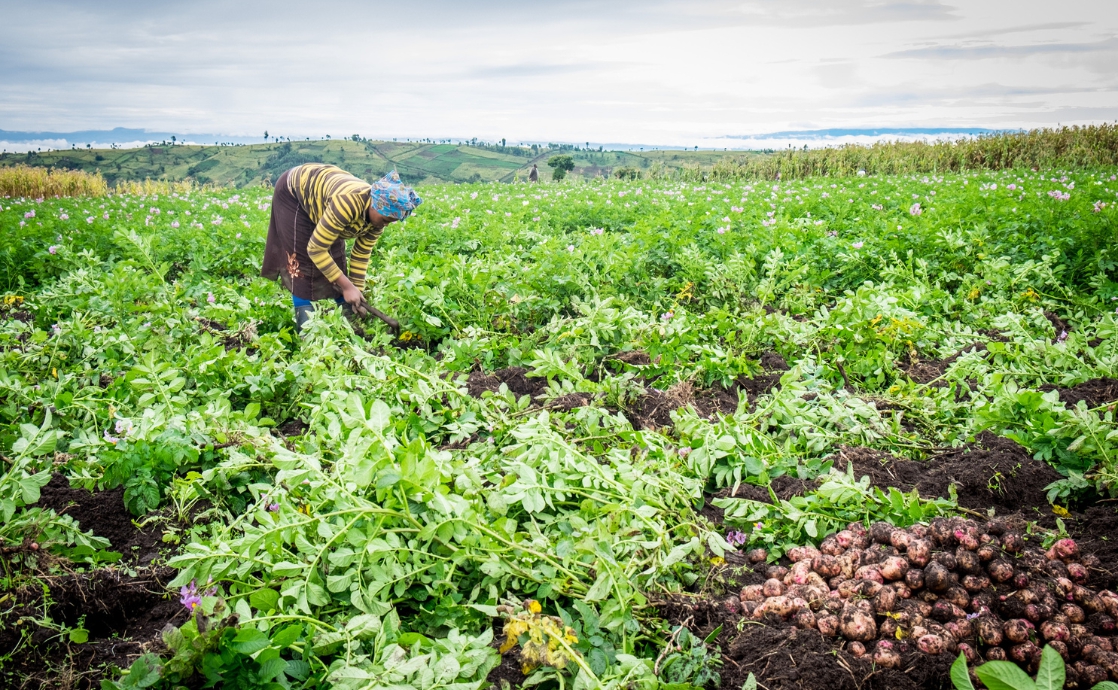The views expressed in our content reflect individual perspectives and do not represent the authoritative views of the Baha'i Faith.
Over half of the world’s population now has a smartphone. Each one of these devices is more powerful than the Apollo Guidance Computer, which was used to get astronauts to the Moon six times.
So here’s a question: why are we still not able to solve humanity’s big problems on this planet when one smartphone, in theory, could take us back to walk again on Earth’s closest celestial body?
RELATED: Agriculture: the Secret Ingredient to Global Peace and Prosperity
Clearly, information, technology, and connectivity cannot affect change on their own.
Several severe global environmental crises now beset us, including climate change, biodiversity loss, food insecurity, and mass migration due to environmental degradation. If our technology can’t do it, what will it take to transcend these crises and begin living in a better and more sustainable reality?
The Baha’i teachings offer a unique and surprising answer to that important question. Baha’u’llah, the prophet and founder of the Baha’i Faith, said, “Special regard must be paid to agriculture.”


Accordingly, I invite you to consider one big idea with an immediate window of opportunity for implementation and a global network of farmers with the capacity to implement it. But first, I also ask that you suspend the temptation to dismiss this idea as impossible before taking the time to consider how fundamental changes in agriculture could turn farming from a major driver of climate change into a net-positive force in reversing it.
The idea is not centered on agriculture writ large but actually on a subset of agriculture as practiced by small-scale family farmers, also known as “smallholders,” who have fewer than five acres or two hectares of land. There are around 500 million smallholder farms throughout the Global South — the developing and emerging economies in Africa, Asia, Latin America, and Oceania — and a third of the world’s people, some 2.5 billion, live and work on these farms.
Smallholders already produce over 30 percent of the world’s food and up to 80 percent in some parts of Asia and sub-Saharan Africa, despite lower yields and efficiencies of operation on average. No matter where they grow food in the world, smallholders have traditionally been ignored by governments and left to their own devices, with little or no training or support to improve their crop productivity.
In fact, smallholders now represent the largest underperforming segment of the world’s economy.
As a global community, we have not paid sufficient attention to these farmers or given them sufficient resources. The Baha’i teachings say that the farmer is “the first active agent in human society:”
The question of economics must commence with the farmer and then be extended to the other classes inasmuch as the number of farmers is far greater than all other classes. Therefore, it is fitting to begin with the farmer in matters related to economics for the farmer is the first active agent in human society.
Many examples exist, including my own experience with the Smallholder Farmers Alliance in Haiti, which shows that when smallholder farmers receive a minimum of support and training, they can increase crop yields by 40 to 50 percent.
Smallholder farmers can feed the world.
Now, take into consideration that the world’s population is projected to grow from the present 8.2 billion to approximately 10 billion by 2050, a stunning increase of 20 percent over the next quarter century. During this period, food production will need to increase by around 30 to 40 percent, taking into account both the increased population and changing diets as more people move into middle-income brackets, which typically results in more meat consumption. How can we produce this additional food without further harming the environment, particularly when agriculture is already responsible for up 22 percent of global emissions?
The big idea in response to this question is to support smallholders in growing the additional food the world needs using a new methodology called regenerative agriculture.
Additionally, and importantly, this food should be produced in the areas where it is most needed so that it is not imported, thereby reducing its carbon footprint and supporting the local economy.
What makes this realistic and doable? All of the projected net global population increase of two billion people will take place in the Global South, precisely where there are smallholder farms with the potential to grow all the additional food needed to feed this increased population.
The key to unlocking this potential is regenerative agriculture, a sustainable farming methodology that replenishes soil nutrients, helps to clean waterways and air, captures carbon, and creates biodiverse farming systems that function holistically and support the well-being of all forms of life within its boundaries and beyond.
Regenerative agriculture is not a new system; on the contrary, it is rooted in Indigenous wisdom and sustainable ancestral agroecological traditions. These traditions have now been integrated with decades of scientific and applied research by the global communities of organic farming, agroecology, holistic grazing, and agroforestry.
More accurately, regenerative agriculture is, to a large extent, a smallholder movement because the methodology is uniquely applicable to small-scale and labor-intensive farming, as opposed to large-scale industrial farming based on extensive monoculture fields used to grow hybrid or GMO crops dependent on chemical inputs.
This emerging smallholder regenerative movement is now at an early stage, involving an estimated five million smallholders practicing at least the core tenets of regenerative agriculture.
RELATED: Adasíyyih: A Baha’i Village Becomes a Model Farming Community
However, with some strategic and targeted support, regenerative agriculture has the potential to explode into a mass movement involving hundreds of millions of smallholders throughout Africa, Asia, and Latin America. Collectively, those regenerative-practicing smallholder farmers are capable of producing the added food the world needs by 2050 while at the same time becoming a major force in reversing climate change.
Recent studies involving farming systems and pasture trials suggest that we could sequester more than 100 percent of current annual CO2 emissions with a switch to regenerative agriculture, not to mention the positive impact on biodiversity, water supply, food security, and migration due to environmental degradation.
When tree planting by regenerative smallholders is factored in, their climate mitigation role grows exponentially. Even without much external support, they are already responsible for a significant percentage of all trees planted in the Global South, either as planted forests or individual trees. And it turns out that smallholders own more than a quarter of all planted forestland worldwide and play a substantial role in the management of global forests.
Whether it is buying credits based on carbon sequestered by trees or payments for climate-friendly regenerative stewardship of farmland, many of the world’s largest corporations and financial institutions are exploring ways to become “nature positive.” This has begun to generate new sources of income for smallholders, with both the payments and backup field data provided via the smartphones mentioned at the outset.
When the history of the modern smallholder regenerative movement is eventually written, accuracy will require the inclusion of the pioneering model farming community of Adasiyyih in what is now Jordan as one of its earliest and most precedent-setting examples. Established in 1901 under the leadership of Abdu’l-Baha, one of the central figures of the Baha’i Faith, the breakthrough farming practices initiated at Adassiyyih represent a 60-year case study of a village engaged in regenerative agriculture. Abdu’l-Baha wrote that: “… the skillful farmer always hath an abundance of crops and harvests. He will find the good and fertile ground. He will plant his seeds, water the soil, and bring in his rich and heavenly harvest.”
In Paul Hanley’s new book “Adasíyyih: The Story of Abdu’l-Baha’s Model Farming Community,” he combines extensive research with his own deep interest in agricultural systems to translate this remarkable and groundbreaking example into practical lessons for the contemporary smallholder regenerative agriculture movement. Interestingly, the sections of the book that focus on community and faith have particular resonance.
Today, regenerative practitioners are expanding their focus from individual farms to also include the areas surrounding those farms. Referred to as a “landscape level” regenerative approach, this includes ensuring the well-being of nearby communities. Hanley describes at length how the development and nurturing of the community itself, in the Adasiyyih example, went much further to position a well-functioning and participatory community as the central organizing force guiding the implementation of regenerative agriculture in the surrounding area. The lesson is that community building drives regenerative agriculture rather than being its beneficiary, a concept that also resonates with the Baha’i-inspired Foundation for the Application and Teaching of Science (FUNDAEC) and their community-based programs linking education and development.
One of the other key messages Hanley elucidates is the role of faith in both community building and agriculture.
In Adasiyyih and its surrounding farms and villages, the Baha’i Faith provides the spiritual impetus necessary to carry out and sustain the model. However, the broader implications ask us to understand the importance of faith, including spiritual or Indigenous traditions, and how we want to define them in implementing regenerative agriculture. They become the key to effective and sustainable community development, which is itself a central component of regenerative farming that is not currently given sufficient importance.
RELATED: Baha’i Lessons for Twenty-First-Century Farming Communities
Why? Because faith traditions are critical in inspiring respect for nature, reinforcing the importance of environmental responsibility, and imbuing the role of the farmer with the dignity and respect it deserves.
Abdu’l-Baha can be considered one of the forerunners of today’s smallholder regenerative movement, but it is also true that later, a Baha’i named Richard St. Barbe Baker played an important role in expanding our understanding of trees in regenerative methodology. St. Barbe Baker’s early efforts with smallholder farmers planting trees in Kenya and Nigeria led to a lifetime as a forest crusader. Paul Hanley’s biography, “Man of the Trees: Richard St. Barbe Baker, The First Global Conservationist,” contains countless examples that can inform contemporary efforts to incorporate tree planting into the cultural DNA of today’s rural communities.
Regenerative agriculture has begun to recast smallholder farmers as both climate and food champions. Paul Hanley has made a significant contribution to our understanding of this new perspective by writing two books that further unlock the smallholder regenerative movement’s enormous potential impact on the world.
Paul Hanley’s books “Adasíyyih: The Story of Abdu’l-Baha’s Model Farming Community,” “Man of the Trees: Richard St. Barbe Baker, the First Global Conservationist,” and a children’s book, “Richard St. Barbe Baker: Child of the Trees,” are all available from the Baha’i Bookstore and other online booksellers.
















Comments
Sign in or create an account
Continue with Googleor